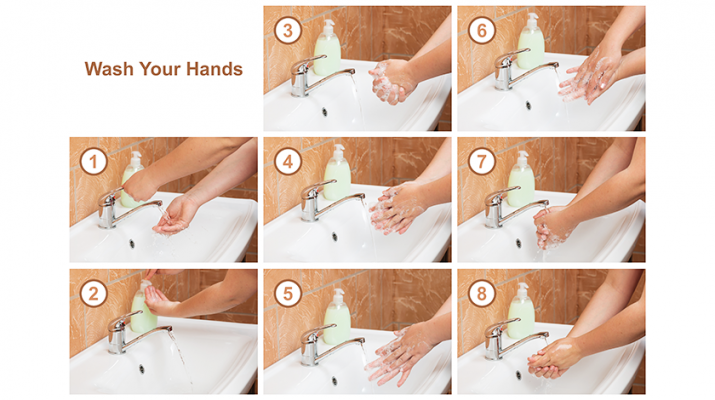By Deborah Jeanne Sergeant
 The best way to reduce your risk of catching a cold or influenza doesn’t cost a thing and is something you already know how to do: hand washing.
The best way to reduce your risk of catching a cold or influenza doesn’t cost a thing and is something you already know how to do: hand washing.
“There are a lot of ways to help prevent the spread of viral and bacterial infections, such as getting a flu shot and staying home from work if you get sick,” said Terri Hammill, director of infection prevention and environmental services for Oswego Health. “The most important step is one of the easiest: washing your hands regularly.”
Most colds and flu aren’t transmitted through the sneezes of sick people. They’re spread through germs left behind on hard surfaces that people pick up later. Good, old-fashioned hand washing removes viruses from the hands so they aren’t transmitted into the body.
Unfortunately, people don’t wash their hands as well or as often as they should. Quick rinses, just rubbing the fingers together a moment or skipping soap don’t work that well.
“You should wash your hands with soap and water, scrubbing all surfaces of your hands — don’t forget those nails — for at least 15 seconds, after you use the bathroom, before you eat, and any time your hands are visibly soiled,” Hammill said.
Hammill said that proper hand washing means using warm water and soap, vigorous rubbing and scrubbing the fronts and backs of the hands, between the fingers and under the fingernails. Anti-bacterial soap isn’t necessary to kill germs.
Duration also makes a difference. She recommends washing for at least 15 seconds.
After rinsing, drying on a towel applies more friction to the hands rather than using a hand dryer.

She covers the handle with a paper towel to avoid contaminating her hands by touching the handle.
Pearl Lavalette, manager of infection prevention and control at St. Joseph’s Health, said that in addition to washing hands, using an alcohol-based hand sanitizer when a sink isn’t available can also help reduce exposure to germs.
“Hand sanitizer is effective against the common cold and influenza, and is appropriate to use to protect against these illnesses,” she said.
She advises people to wash or use hand sanitizer “often throughout the day” including “after coughing, sneezing—even if they should cough or sneeze into the crook of their arm —, or blowing their nose; and before preparing food, eating, drinking, or touching their eyes or their face.”
Since most people pick up a cold or case of the flu by transferring the germs from their hands to their eyes, nose or mouth, it’s important to avoid touching the face while in public.
Living in a germ-free bubble isn’t advisable–or possible. It’s all about cleanliness balanced with sensibility.
“You can’t be a germ freak, but you have to use common sense, too,” said physician R. Paul Ferenchak, owner of My Country Doctor in Lafayette.

In addition to keeping hands clean, Ferenchak advises people to coughing into the crook of the elbow and avoiding shaking hands after blowing the nose to help curtail the spread of germs, along with simply avoiding people known to be sick and staying home when sick.
In addition, managing stress, eating a balanced diet and exercising all help support overall health, including a healthy immune system, which can also help the body fight off colds and flu.

